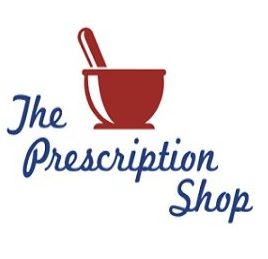What is it?
Vulvovaginal candidiasis yeast infection occurs when the vagina is infected by a group of fungi called Candida. Because yeast is a type of fungus, we consider this a fungal infection. Candida yeast normally live in the vagina and gut without problems since the vagina is usually too acidic for a lot of yeast cells to grow. However, when vaginal conditions change, this can cause an overgrowth leading to an infection. Yeast infections are not considered sexually transmitted.
What are the symptoms?
- Vaginal and vulvar itching (the most common symptom)
- Vaginal and vulvar burning, swelling, redness and pain
- Pain during intercourse
- Pain when urinating
- Thick, white discharge that looks like cottage cheese
What increases my risk?
- Wearing tight and non-breathable clothing that doesn’t allow air circulation
- Taking antibiotics (which kills the naturally occurring bacteria in the vagina which keeps the yeast at bay)
- Birth control
- Having a weakened immune system
- Having diabetes
- Being pregnant
- Prior to menstrual periods
- Stress
When should I see a doctor?
Before self-diagnosing and seeking out treatment, there are certain situations where it is recommended to see the doctor first. Situations include:
- Never had a yeast infection before
- Not sure if you have a yeast infection
- Have a weakened immune system, have diabetes or are pregnant
- Is at risk of an STI (history of unprotected intercourse, multiple partners) due to similar symptoms
- If it has been less than 2 months since the last yeast infection
- If you get frequent yeast infections (4 or more times per year) because it may require different treatment
What can I do to prevent a recurrence?
There are certain things you can do to try to minimize the risk of a yeast infection recurrence. Keep the vulva clean and wear loose, absorbent cotton underwear and pants to allow air circulation and minimize moisture presence. If you need to wear pantyhose, wear one with a cotton crotch piece and avoid wearing daily. Change out of a wet bathing suit or damp clothes as soon as possible. Wipe front to back after using the toilet to keep bacteria out of your vagina.
Avoid perfumed genital products (vaginal deodorants, feminine hygiene sprays, deodorant sanitary pads or tampons etc) and bubble baths since the perfume can cause irritation and allergic reactions. Likewise, avoid douching because it can disrupt the normal vaginal environment and therefore increase the risk of irritation and infection. Although dietary yogurt with live culture or lactobacilli oral capsules don’t prevent post-antibiotic vaginal yeast infections they may help restore normal flora.
What are the treatments?
There are effective topical and oral treatments available for vaginal yeast infections available over-the-counter. Sometimes it will come down to preference when narrowing the plethora of options available. The two antifungal vaginal topical preparations available are CLOTRIMAZOLE and MICONAZOLE. They come as creams, vaginal tablets or vaginal ovules and are available in 1-day, 3-day and 7-day preparations. Bedtime dosing is recommended to ensure the medication stays inside the vagina to prolong contact time. Even if your period starts, it is recommended to treat through your period.
Avoid using tampons (which may absorb the medication and therefore decrease the effectiveness) but instead use pads or panty liners. If using reusable applicators, wash well with soap and water after each use. If using disposable applicators, make sure to throw it out after use. Do not share applicators.
Generally well tolerated, side effects may include local irritation. Interactions are minimal with the exception of miconazole which may interact with warfarin. For extensive vulvar itching, the topical antifungal can be applied to the vulva as well. Some vaginal preparations contain mineral or vegetable oil which may decrease the effectiveness of latex condoms or other vaginal contraceptive devices during treatment and for up to three days after treatment.
FLUCONAZOLE 150mg oral capsule is a common treatment sought for its one-day course ease of use. Side effects include nausea, abdominal discomfort, headaches, diarrhea, and dizziness. However, there is a risk of drug interactions. Please speak with your pharmacist to ensure that fluconazole is a safe option for you.
With all the above mentioned options, upon starting treatment, symptoms should improve in around three days and resolution within seven days. Oral fluconazole and topical antifungals are equally effective with greater than 90% response rates. Ensure that the full treatment course is completed for whichever option is chosen. If no improvement is seen with treatment or if symptoms worsen during treatment, make sure to follow up with a doctor.
References available on page 2.
